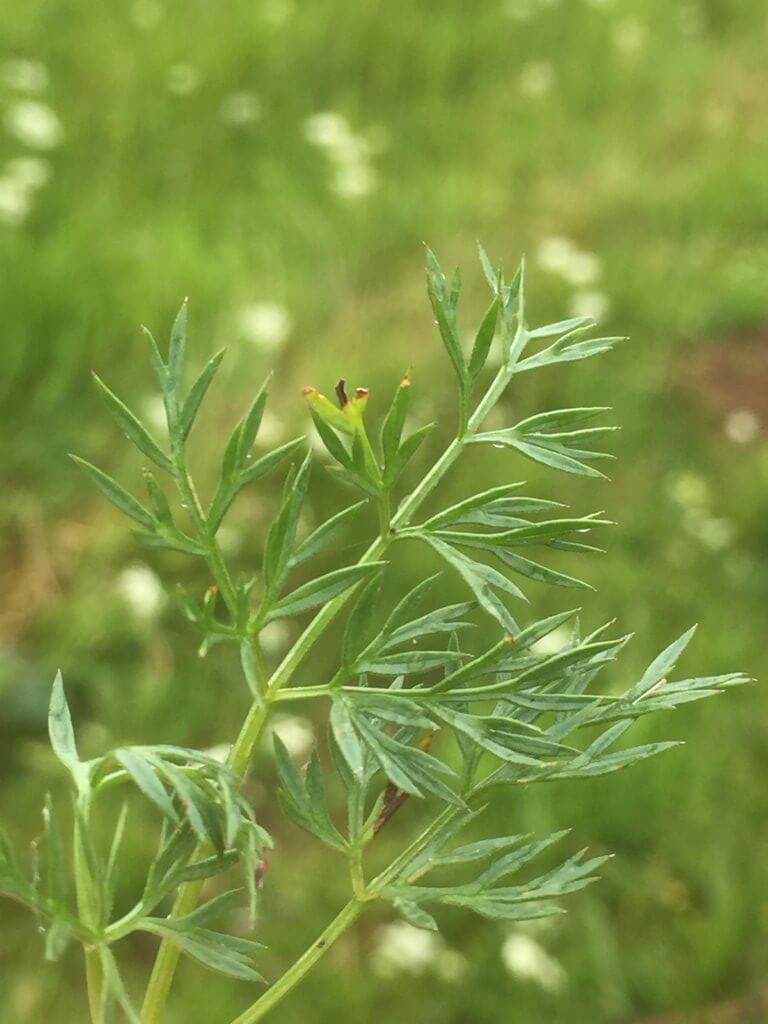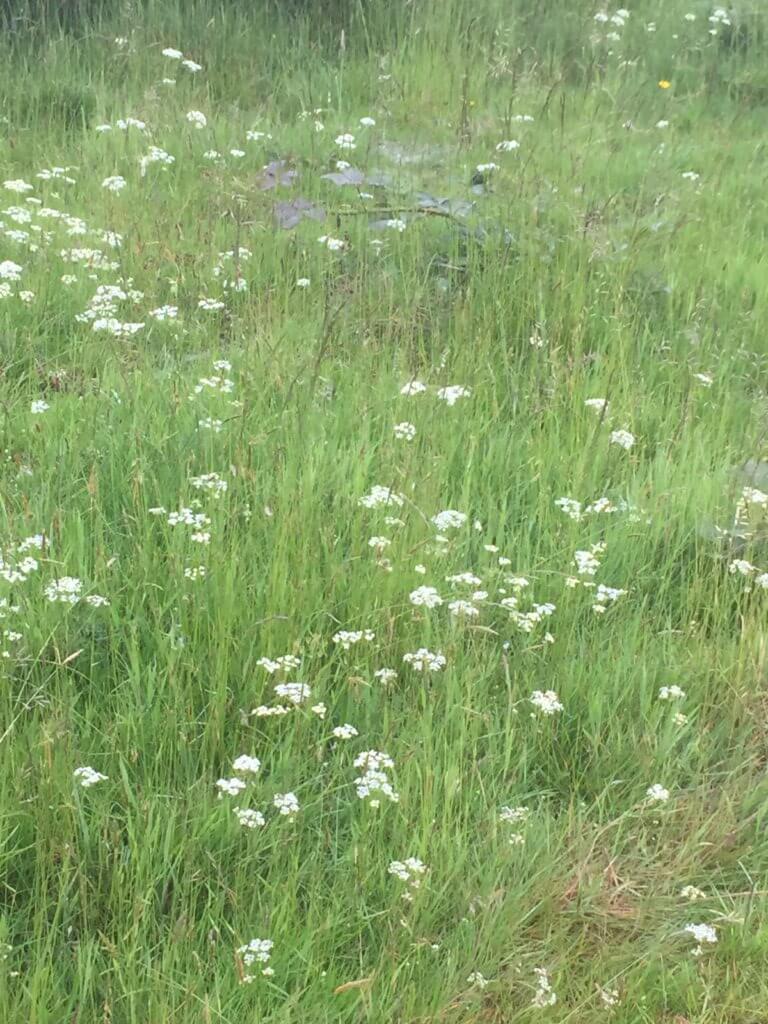
Pignuts are umbellifers (in the carrot family) and are like miniature versions of the more familiar Cow Parsley. To help confirm the identification, look closely at the finely divided leaves, especially those towards the base of the plant. If you grow your own carrots you may notice the similarity in leaf structure. In favoured meadows and woodland rides Pignuts can cover large areas, softening the landscape with their delicate white flower-heads.
This species was much loved by rural schoolchildren in the days when they were able to recognise useful wild flowers. It’s easy to imagine the pleasure they would have gained from rooting up the small edible tubers – especially in times when food was hard to come by and tended to be bland and repetitive.
It’s harder than you might think to locate the nut-like tubers, especially in heavy soil and if you are trying to do the job carefully so as to cause as little disturbance as possible.Ideally, you want to trace the stem of the plant down through the soil until you reach the ‘nut’ still attached to the plant. This helps to ensure that what you are about to eat is indeed a Pignut. The bulbs and tubers of other species, often found in close proximity, can look surprisingly similar and some are poisonous.
Once the Pignut tuber has been retrieved you can rub off the outer coating, which helpfully removes all the encrusting dirt,and eat it raw. The taste is not unlike that of Hazel nuts (a definite positive) with a slight aftertaste of celery (not so positive).
These plants were on one of Devon Wildlife Trust’s reserves so were not available for exploitation and it’s worth noting that landowner permission is needed before digging up any wild plant. The local Badgers are happy enough to ignore the rules and have rooted through large areas on this site to dig out the tubers. I’ve often noticed this Badger ‘damage’ locally and pondered its likely effects on the vegetation. As with all such impacts no doubt it is very good for some things but has a negative effect on others. Across a large site it must surely help to maintain a diversity of different types of vegetation. It certainly helps put in perspective the loss of the occasional plant due to human foraging.

[registration_form]
Thanks Ian. Parsnip flavour comes to mind when roasted.
The Pignut’s seed is odd because when it germinates it doesn’t produce the usual twin seed leaves as in most flowering plants (the monocotyledonous grass family excluded.) Instead there is just one simple grass-like leaf that grows to about 25 mm. This then dies back leaving a very small white micro-tuber to overwinter before producing ‘adult’ leaves the following spring.
The Pignut is classed as pseudo-monocotyledon. It’s quite a successful plant and so there must be some advantage to this delayed development behaviour. But it’s a job to know what.
Perhaps it’s an enhanced dispersal and pioneering system aided by those rooting badgers you describe. It’s possible that both seeds and micro-tubers (~2-3 mm across) get trapped in snout or paw and then fall off at a distance giving this plant two chances to colonise new ground via germination and pseudo-germination. If the one system fails the other might succeed or vice versa.
But one thing’s certain: the Pignut, unlike many of its Umbellifer cousins, has never been cultivated. The pseudo-monocotyledon behaviour makes it quite unlike carrots and parsnips which produce large edible roots straight from seed. No amount of seed sowing and selection has ever circumvented the Pignut’s unusual method of growth.